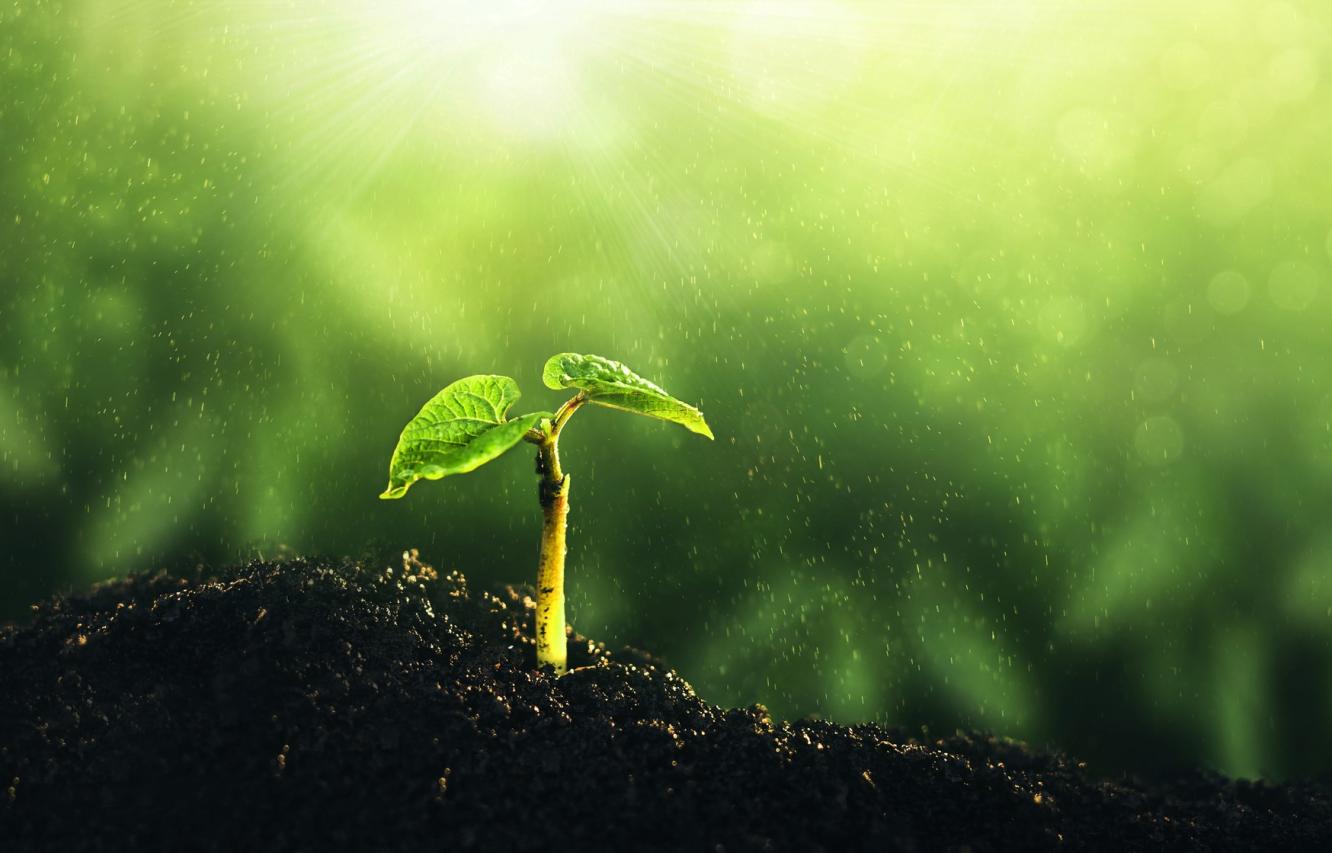Environmental Transformations and Interactions
Discovering How Fungi Increase Soil Potassium through Mineral Weathering
Using a synthetic soil habitat, or TerraForms, scientists uncovered key processes for how fungi release mineral-bound potassium to enrich soil.

Because of the difficulty in observing soil chemical processes, scientists used a type of synthetic soil habitat, which is a member of a group of technology called TerraForms, to determine how mineral-bound elements like potassium (K) can be released into the soil as an important nutrient for agricultural and bioenergy crops. (Image by Galeanu Mihai | iStock)
The Science
Plants rely on potassium for many critical biological processes, but most soils contain a limited amount of the element, and it is often bound up with minerals. Soils are also thick and dark, making it difficult to peer inside and watch chemical processes in action. Knowing that certain types of fungi can free potassium from minerals, scientists used a type of synthetic soil habitat or mineral-doped micromodel, which is a member of a group of technology called TerraForms, to study and directly visualize how a fungus common to North American grassland creates potassium-rich minerals in soil. What they discovered has implications for the health of agricultural and bioenergy crops.
The Impact
Nitrogen, phosphorus, and potassium are essential elements for plant growth, but can only be obtained through plant roots as they grow within soil. Because these elements are scarce and largely trapped in minerals in the soil, most crops important to agriculture and bioenergy are grown with the aid of fertilizers, which have become more difficult to obtain and costly in recent years. Research into alternative, sustainable practices to increase the local nutrient supply through naturally present mineral-bound elements could lead to approaches to improve plant health.
Summary
A multi-institutional team of scientists used a previously developed a mineral-doped micromodel at EMSL, the Environmental Molecular Sciences Laboratory, a U.S. Department of Energy (DOE) user facility. This specific TerraForms technology included potassium-rich soil minerals and a mineral-loving fungus called Fusarium, which is native to North American grasslands. Teaming with the Stanford Synchrotron Radiation Lightsource, also a DOE user facility, the scientists were able to directly observe biogeochemical processes in the synthetic soil habitat over 30 days under carbon-limited conditions. They discovered that the fungus weathered the minerals using organic acid, resulting in the formation of secondary clays. Potassium in these clays was more readily available to plants than it was when structurally bound within minerals. The scientists also determined that the distribution of these secondary clays and the type of organic acid the fungus exuded depended on the proximity to a source of carbon. Thus, the main control on the ability of the fungus to weather potassium-rich minerals was found to be the location of that carbon source. The results of this research can be used to define practices that can free natural potassium in the soil, avoid the use of costly fertilizers, and improve plant health.
Contacts
Arunima Bhattacharjee, EMSL, arunimab@pnnl.gov
Jocelyn Richardson, Stanford University, jocelynr@alac.stanford.edu
Christopher Anderton, EMSL, christopher.anderton@pnnl.gov
Funding
This research was conducted as a partnership between EMSL, the Environmental Molecular Sciences Laboratory, and the Stanford Synchrotron Radiation Lightsource, both DOE Office of Science user facilities. Additional support was provided by the National Institutes of Health.
Publication
J.A. Richardson, et al., “Saprotrophic Fungus Induces Microscale Mineral Weathering to Source Potassium in a Carbon-Limited Environment.” Minerals 13, 641 (2023). [DOI: 10.3390/min13050641]

